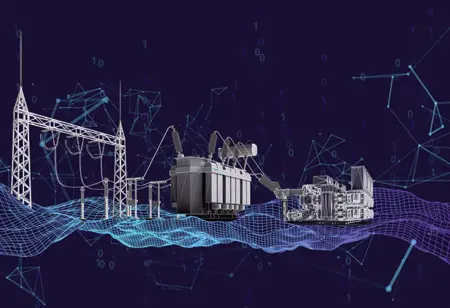Thank you for Subscribing to Electrical Business Review Weekly Brief
I agree We use cookies on this website to enhance your user experience. By clicking any link on this page you are giving your consent for us to set cookies. More info
Smart Grid Revolutionizes Energy Management with Advanced Innovations
This wave of innovation, characterised by grid automation, real-time monitoring, and predictive maintenance.

By
Electrical Business Review | Monday, May 06, 2024
Stay ahead of the industry with exclusive feature stories on the top companies, expert insights and the latest news delivered straight to your inbox. Subscribe today.
The landscape of energy management is undergoing a transformative shift, thanks to the latest advancements in smart grid technology.
FREMONT, CA: This wave of innovation, characterised by grid automation, real-time monitoring, and predictive maintenance, is poised to redefine how we produce, distribute, and consume energy, enhancing both efficiency and reliability.
Grid Automation: Enabling Seamless Energy Flow
Smart grid technology has made significant strides in automating grid operations, allowing for seamless energy flow and enhanced response to changing conditions. Automated systems equipped with advanced sensors and communication networks can instantaneously reroute energy around faults or disruptions, minimising downtime and preventing widespread outages.
The city of Singapore has been pioneering grid automation through its Smart Energy Network Demonstrator Singapore (SEND.sg) project. This initiative utilises advanced algorithms to optimise energy distribution and manage renewable energy sources, ensuring a reliable and stable power supply for the city's residents. Grid automation's ability to adapt in real-time to fluctuations is a critical component in supporting the transition to renewable energy while maintaining grid stability.
Real-time Monitoring: Empowering Informed Decision-Making
Real-time monitoring is another pivotal aspect of smart grid innovation. With the integration of advanced sensors and data analytics, utilities can closely monitor the grid's health, identifying potential issues before they escalate into larger problems. This data-driven approach enables utilities to make informed decisions about load balancing, maintenance scheduling, and resource allocation.
In the United States, the Pacific Gas and Electric Company (PG&E) has rolled out an ambitious real-time monitoring system to enhance grid reliability. By analysing data from thousands of sensors spread across its grid, PG&E can detect anomalies and address potential equipment failures proactively. This proactive approach has helped reduce the frequency and duration of outages, ultimately benefiting customers and boosting overall energy efficiency.
Predictive Maintenance: Minimising Downtime
Predictive maintenance is rapidly emerging as a game-changer in energy infrastructure management. By employing machine learning algorithms and AI-driven analytics, utilities can predict when equipment is likely to fail and schedule maintenance before an issue escalates. This approach minimises downtime, reduces maintenance costs, and enhances the overall resilience of the grid.
In Europe, Germany's utility giant E.ON has embraced predictive maintenance to optimise its grid operations. By analysing historical data and real-time sensor information, E.ON can accurately forecast when equipment, such as transformers and switchgear, might need maintenance. This proactive strategy has led to fewer unplanned outages and extended the lifespan of critical infrastructure components.
Toward a Sustainable Energy Future: Collaboration and Progress
As smart grid technology continues to evolve, collaboration between governments, utility companies, and technology providers becomes imperative. Regulatory frameworks that incentivize investment in smart grid infrastructure and data security measures are crucial for the widespread adoption of these innovations.
In conclusion, the era of smart grids is ushering in a new age of energy management. Grid automation, real-time monitoring, and predictive maintenance are revolutionising the way energy is distributed, consumed, and safeguarded. These innovations are not only improving energy efficiency and reliability but also driving the transition towards a sustainable and resilient energy future.








